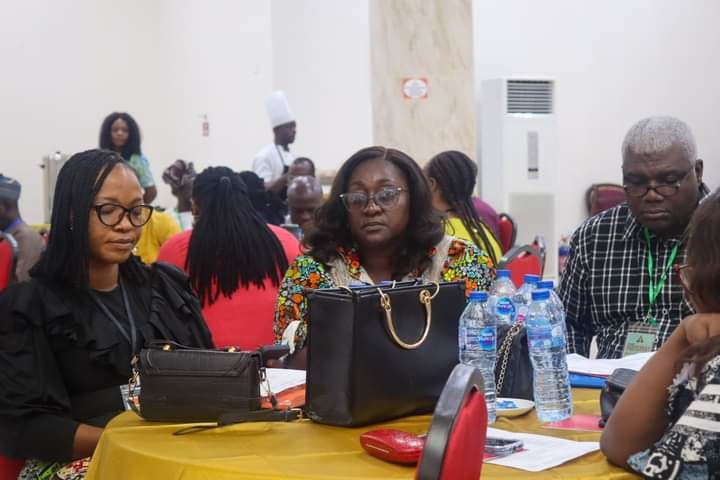…Advocates conduct of prevalence survey before 2027
…Time for more efforts, investment
By Hassan Zaggi
From the figures, Nigeria is making considerable progress in its efforts to end Tuberculosis (TB) by 2030. However, this is the most crucial stage of the fight as more efforts and investment from both the government and the critical stakeholders is required to sustain the progress and win the war.
This is bad time to slack or ‘remove our feet from the accelerator.’
Delivering a paper on ‘Key Milestones to ending TB in Nigeria by 2030/2035,’ at the National Consultation on Post-UNHLM on TB, in Abuja, the World Health Organisation (WHO) National Professional Officer (TB) in Nigeria, Dr Amos Omoniyi, disclosed that Nigeria has surpassed the UN High-level meeting target and is cruising to ending TB by 2030.
The consultation meeting was organized by the Stop TB Partnership Nigeria in collaboration with the National Tuberculosis and Leprosy Control Programme (NTBLCP)
Dr. Omoniyi, however, warned that the fight against the disease is at its peak and crucial stage with all hands and more investment needed.
According to him: “For us, in the next five years, we are looking at diagnosing 2.3 million people and treating them. This is one of the milestones.
“In actual number, you can see that our cases are increasing, but if you look at the proportional increase, you can see the cases increase by 50 per cent. But the increase started dropping. The meaning of this is that, the more you go higher, for you to achieve that proportional increase, you need to put more effort.
“For me, this is the time that the TB programme need to put in more efforts than before. This is the time we cannot afford to take our feet off the accelerator. This is the time we need massive efforts in terms of finding the cases and in terms of treating them.
“As it is now, we are closer to the top to end TB, but this is the time for us to do more work. We need to do a comprehensive work at this time. This is the time we need heavy investment, especially, in terms of domestic resources to be able to achieve this.
“This is the time we need a lot of domestic resources. This is the time that the government of Nigeria actually need to take some actions. One of the actions is for the Stop TB Partnership to get the Nigerian government to convince individuals to start procuring TB medicine for patients in Nigeria.
“Most countries use their domestic resources to procure TB medicine for the patients in the country so that once we have support from partners we can use it to scale up interventions.
“This is the time we need a lot of multisectoral engagements and collaborations so that we can open other sectors because TB alone will not achieve that target. This is the time we need the three Is- Innovations, integration and inclusiveness and comprehensiveness.
“This is the time we need inclusiveness and comprehensiveness ensuring that our services are comprehensive to address the need of anyone.
“Stop TB Partnership has a role to play here. This is the time we need the Stop TB Partnership to be bold and adventurous in supporting the program to get the needed resources. This is the time we need more efforts. This is the time we need the resources more.”
Looking back at the effort and progress Nigeria has made since 2015, Dr. Omoniyi explained that: “When we say ending TB by 2030, it means we are measuring three high level indicators. We are looking at reduction of the number of TB deaths compared with 2015 to have reduced by 90 per cent by 2030 and 95 per cent by 2035.
“Also, reduction in TB incidents compared with 2015 to have reduced by 80 per cent by 2030 and 90 per cent by 2035. If we are able to achieve these we will be able to say, as a country, we have been able to end TB.
“Looking back to see what we have achieved so far and relating this to the UN high level meeting 2018, 2022. When we look at it in terms of TB diagnosis and treatment, we have been able to achieve 97 per cent of our target for these five years. In terms of TB notification, even though we have done well generally, when we look at it in terms of children, we can see that we are able to achieve 37 per cent of the target for the children. A lot of the childhood TB cases are missed.

“As we talk of case notification and putting on treatment, we need to also be talking about how do we address the target for childhood TB. For TPT, we just achieved about 17 per cent of that.
“Looking back also, our treatment coverage and notification has increased, we are on upward trajectory. As at 2022, we have 28,557 and if you look at what we have on the first three quarters of this year, we have 267,000 cases. And looking at the last quarter, we have over 90,000. So, possibly, we are going to reach over 350,000 cases by next year.
“The implication of this is that, even before they increased the highlevel meeting target, we have already surpassed it.
“You can see for 2023, according to the presentation for this year, it is supposed to be at 387,328 and for 2024, we are supposed to be at 345,000. So, by the end of this year as a country, we should have reached about 350,000 cases. This means that we are already far beyond these targets being set.
“By next year, we would possibly have reached 70 per cent coverage. As a country, we are progressing.
“If we are able to achieve what we have set for ourselves, we are likely to make a lot of progress towards ending TB by 2030.
“Looking at the next five years, we are supposed to detect 90 per cent of our TB cases, that translates to about 2.3 million TB cases diagnosed and treated. Though the target they gave us is 1.9, but we are working towards getting about 2’3 million cases in the next five years diagnosed and treated.
“So, the meaning of this is that, every quota, we are going to be having above 100,000 cases and we have already started working towards that. The last quota we had 99,000 cases, which means this is doable.”
Reiterating the need for the conduct of another prevalence survey to enable Nigeria know the true situation of the TB in the country, he said: “ Before the end of 2027, Nigeria needs to conduct a prevalence survey so that we can better set our incident rates and our prevalence rate.
“The Stop TB Partnership need to prevail on the federal government to put in resources so that we can conduct prevalent survey before the end of 2027. This will enable us actually know if the incidence has gone down or is increasing. The last incident rate was done in 2012.
“If you look at the five factors that drive TB, one of them is under nourishment. As we all know, malnutrition is on the increase in the country. Even though we have made some progress in HIV, but you can see that the effect of malnutrition is so high. Diabetes is still there.
“As we are planning to do our prevalence survey, we need to massively scale up our interventions. The next four years are critical for TB programme in Nigeria.
“We have had reduction in TB deaths compared to 2015 but even at that, we still have one person dying of TB in every 5 minutes in Nigeria. COVID did not kill this number, but we have failed to do much about it. A lot of people are dying silently and a lot of people are losing their loved ones.
We are making progress but we are not yet there. A lot of things need to change. “



